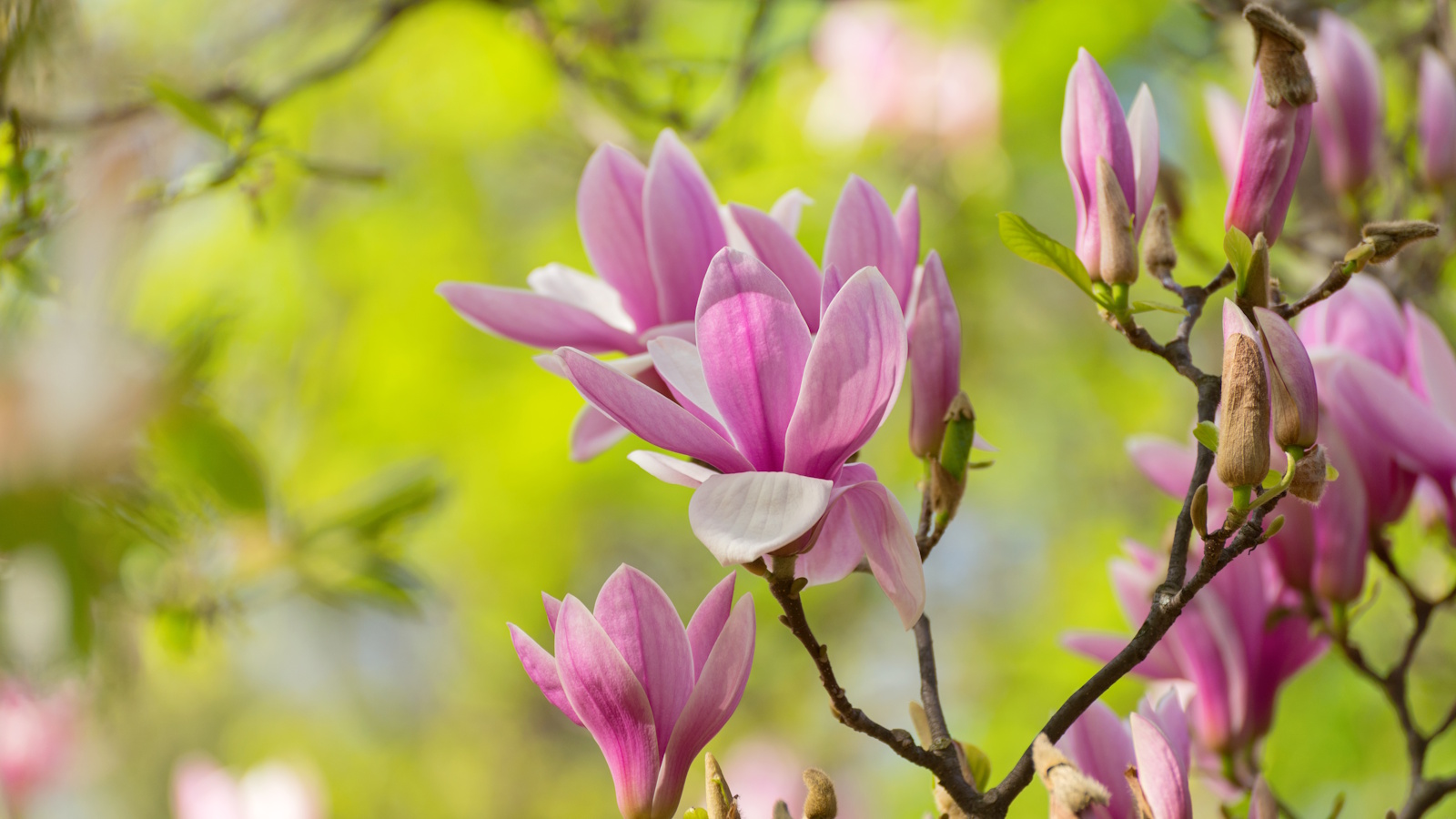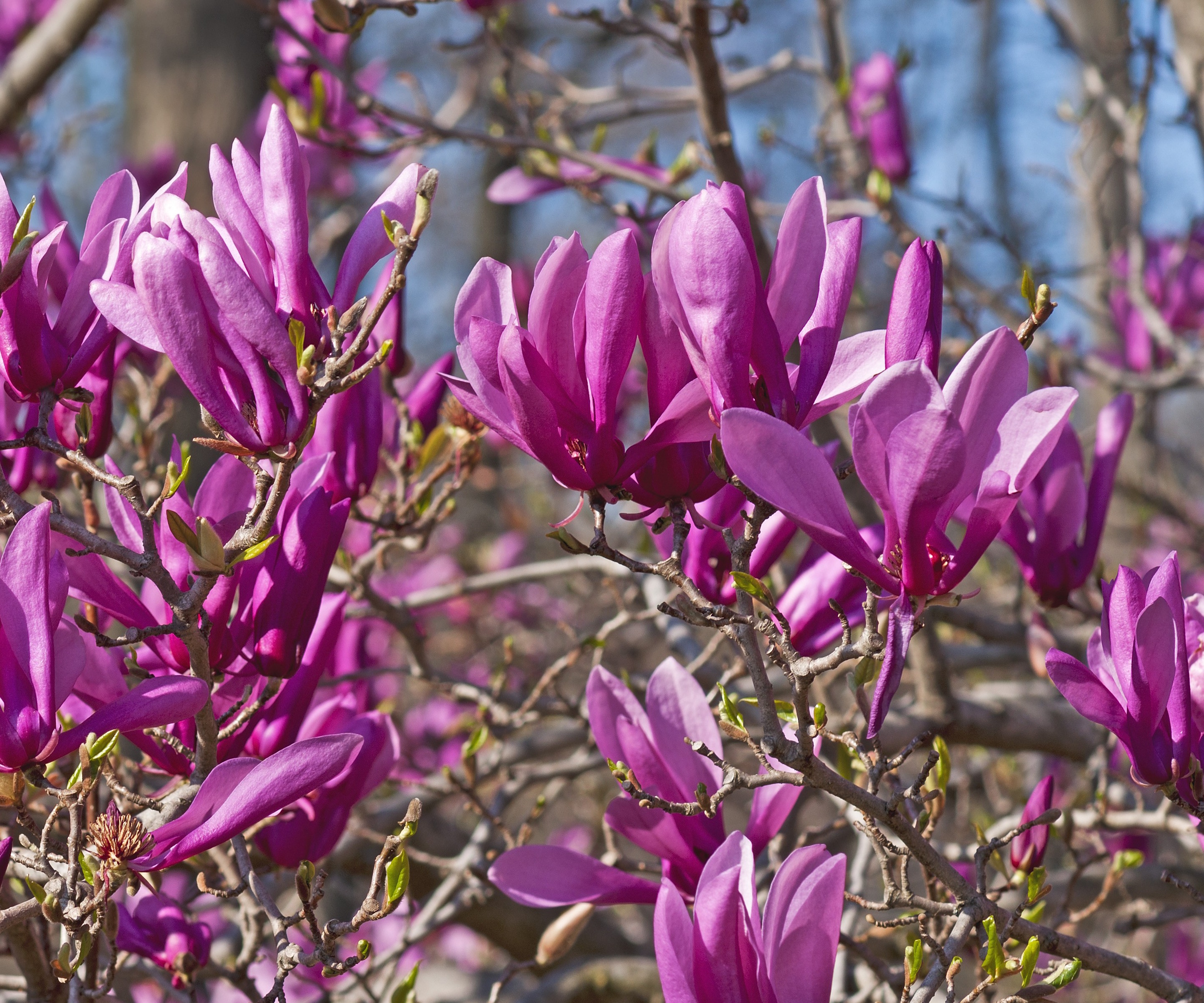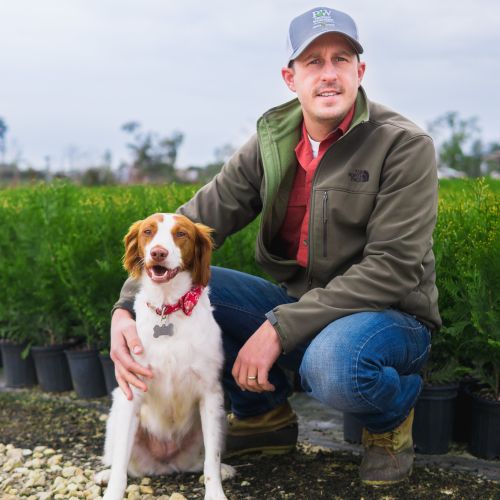How to fertilize magnolias – garden experts reveal the secrets to better blooming, and timing is critical
Magnolias are famed for their spring flowers, and feeding at the right time can give trees a boost


Magnolias are striking flowering trees loved by gardeners the world over. Whether it's the large blooms of the native Magnolia grandiflora or the spider-like petals of Magnolia stellata, it is hard not to become magnolia-obsessed during spring. While they are generally low-maintenance, many gardeners often ask: should I fertilize magnolias?
The answer, as with most things, is a mix of yes and no. Magnolias in pots will certainly benefit from regular feeding during the growing season, but younger specimens - or those struggling to flower - can benefit from a nutrient boost, too.
So, if you want to learn how to grow and care for a magnolia tree, you have come to the right place. Here, one garden expert reveals how best to fertilize magnolias to encourage stronger growth and spectacular blooms for years to come.

How to fertilize magnolias
There are over 200 species of magnolia trees found growing worldwide. Some are cold-tolerant and can be grown as low as zone 4, whereas others prefer the hot and humid conditions experienced in equatorial regions in zone 10. Whatever species you grow and wherever you live, knowing when and when not to fertilize magnolias is important.
When to fertilize magnolias

'Magnolias are some of the best spring flowering shrubs and trees,' says Alex Kantor, owner of Perfect Plants Nursery. 'Whether grown in borders or containers, it is important to always remember soil health and nutrition to generate the best results.'
Though not generally considered hungry feeders, occasional fertilizing will keep them healthy and in good shape.
'If you grow one of the more compact varieties or best dwarf trees in a pot, such as 'Ann' mangnolia, available from Perfect Plants Nursery, these will need feeding during spring and summer, usually once a month beginning in March or April and lasting until August or September.'
Design expertise in your inbox – from inspiring decorating ideas and beautiful celebrity homes to practical gardening advice and shopping round-ups.
In addition, for younger specimens growing in the ground or for older trees that display poor bloom production, you might consider feeding once per year in either March or April to give your plants a boost.
Under no circumstances should you feed trees, shrubs or plants in the fall or winter months, as this can do more harm than good, encouraging them to produce new growth when the temperature is about to drop.
However, for established magnolias that look happy and healthy, a generous mulching once per year should do the job to feed the soil, retain moisture and keep weeds at bay. This can be done at any time of the year, but when working as a professional gardener, mulching was typically a job that I did in the fall months.

Alex has worked in the horticultural industry for over 20 years and grew up on the farm since his childhood years. Alex is an expert on landscape trees, shrubs, and indoor plants. He is passionate about growing and helping others learn the trade.
How to fertilize magnolias

To feed trees growing in borders, use a slow-release fertilizer or blood, fish and bone, which is ideal for magnolias because it's a source of phosphorus, calcium and nitrogen, supporting overall plant vigor and root growth.
Try this organic bone meal from Burpee, available from Amazon.
In early spring, sprinkle a small amount of feed atop the surface of the soil around the base of your tree before applying two inches or more of mulch. Over time, this will make its way into the soil and support healthy plant growth. Remember to keep mulch off the base of the trunk to avoid the risk of rotting the bark.
'For magnolia trees growing in pots, you can fertilize in the spring using a balanced slow-release fertilizer, available from Perfect Plants Nursery. This low-maintenance option will mean that you only need to feed pot-grown trees once per growing season,' says Alex.
Alternatively, for container plants, you can use a liquid feed. From March, use a bloom booster feed for the first month to encourage flowering, after which you can swap to a general balanced product with equal plant fertilizer numbers (such as 5-5-5).
Always follow the instructions on the packaging, only using the recommended quantities to avoid damaging or burning the roots.
FAQs
Can I feed magnolias with coffee grounds?
Whilst it may sound strange, coffee grounds are good for plants and can be used as a fertilizer for feeding magnolias. Coffee grounds are slightly acidic, which suits acid-loving magnolias. Coffee grounds are also high in nitrogen and also contain potassium and phosphorus and can be used to fertilize a variety of plants. Simply sprinkle atop the soil - it really is that simple.
Magnolia trees are generally slow-growing, but sometimes poor flowering can be a result of pruning at the wrong time. In terms of when to prune a magnolia tree, this is best done after they finish flowering, typically from early to late summer, to avoid removing buds that will open the following year.
Shop fertilizing kit

Thomas is a Content Editor within the Gardens Team at Homes and Gardens. He has worked as a professional gardener for both public spaces and private estates, specializing in productive gardening, growing food and flowers. Trained in Horticulture at the Garden Museum, he has written on gardening and garden history for various publications, including The English Garden, Gardens Illustrated, Hortus, The London Gardener and Bloom. He has co-authored a Lonely Planet travel book, The Tree Atlas, due out in 2024.


